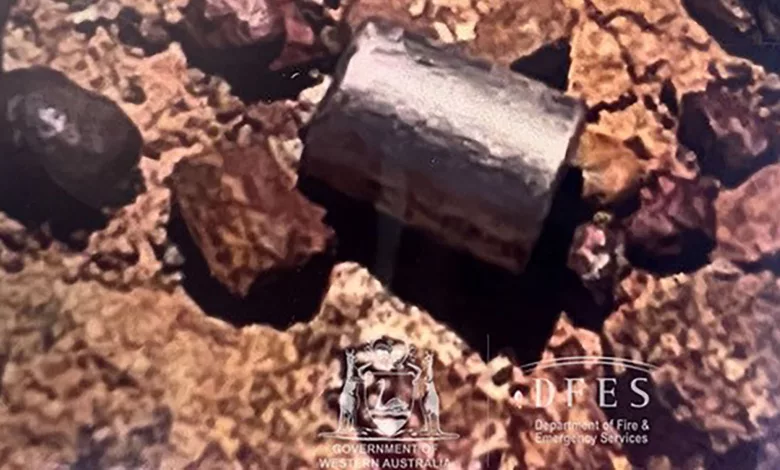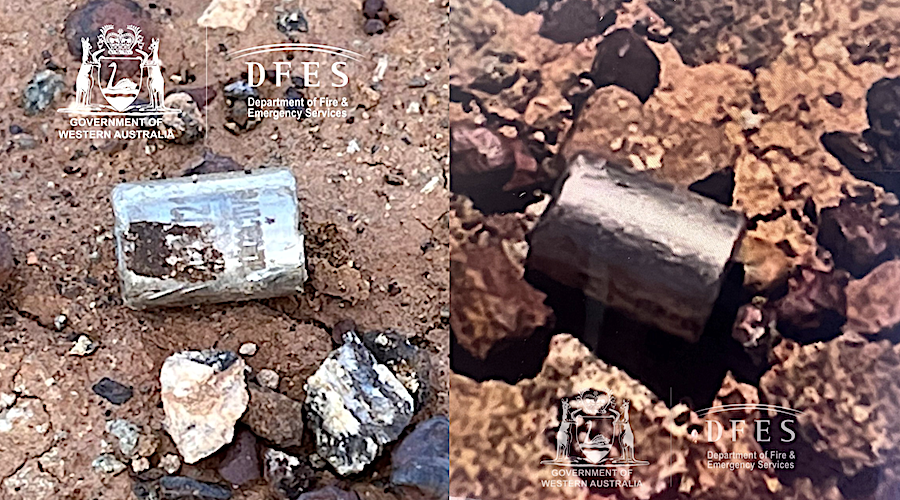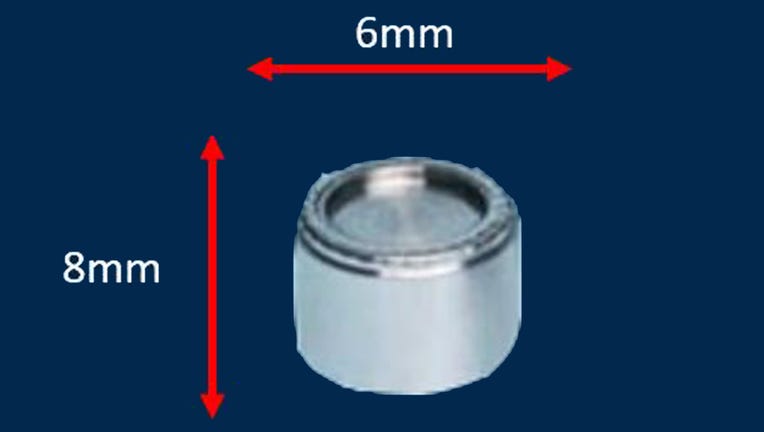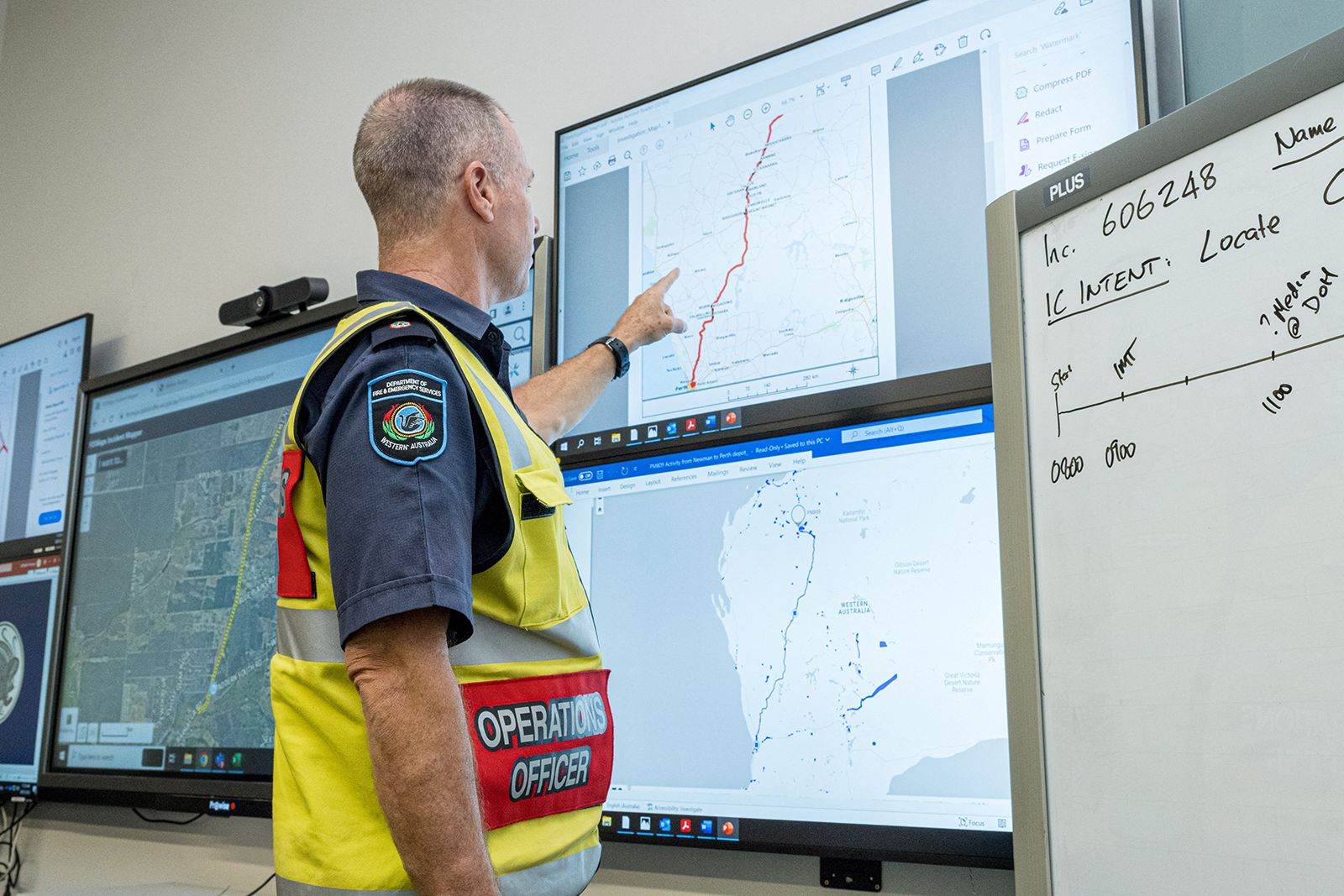Australia’s lost “dangerous” radioactive capsule was found following a six-day search

A small radioactive capsule that went missing last month has reportedly been located, according to authorities in Western Australia. The rescue services had “really found the needle in the haystack,” they said.
An extensive search was started when the item vanished following transport across the state’s 1,400 km (870 miles) border. A close-up image of the pea-sized capsule, which might be handled dangerously, lying on the ground among small stones, was provided by the authorities.
They were able to verify that they had found the right capsule, which is 6 mm (0.8 mm) long and 24 inches in circumference, owing to a serial number. It contains a small quantity of cesium-137, which can cause radiation sickness, burns, and skin damage. Major mining giant Rio Tinto expressed concern at the loss of the instrument, which acted as a density indicator for the industry. The capsule will now be housed in a lead container with a 20-meter “hot zone” surrounding it.
Australian government officials have committed to updating the relevant rules.
The existing penalty for improper handling of radioactive materials is, according to Prime Minister Anthony Albanese, “ridiculously cheap.” It is presently $1,000 ($700, £575) and $50 ($35, £30) for each additional day the offense persists. Andrew Robertson, the senior health officer for Western Australia, claims that exposure to minute levels of metal is comparable to “receiving 10 X-rays in an hour, just for perspective, and the amount of natural radiation we would receive in a year, simply by walking about.” Up until two weeks ago, it was considered possible that the capsule could have vanished.
The location of the missing capsule’s search was rather large. It resembles the drive from Washington, D.C., roughly equally, from John O’Groats in northern Scotland to Land’s End in southwest England, or from there to Orlando, Florida. The state’s desert, which is far away, is one of the least populated regions in the country. Only one out of every five people in Western Australia lives outside of Perth, the state’s capital.

The gauge was removed from the mining site on January 12 and transported to a storage facility in Perth’s northeast suburbs by a subcontracted company. The radioactive capsule was missing and the gauge was damaged when it was unpacked for examination on January 25. Additionally, one of the four mounting nuts and screws was missing. The fasteners may have broken free due to vibrations during transport, according to The capsule was permitted to fall through cracks in the truck’s exterior by the authorities.
At the time of this incident, Rio Tinto was seeking to repair its reputation in Australia. The 46,000-year-old rock shelters at Juukan Gorge in Western Australia were demolished by Rio Tinto in 2020 to make way for an iron ore mine, igniting a significant uproar that resulted in the resignation of several of the company’s senior executives. An internal assessment at Rio Tinto revealed that more than 20 women had claimed real or attempted rape. A parliamentary committee last year found that sexual harassment was pervasive at Australian mining corporations after investigating five years of sexual assault.
What is the purpose of and how dangerous is the radioactive capsule lost in Washington?
What is the purpose of the capsule?
A ceramic source for cesium-137, often used in radiation gauges and measuring 19 GBq (gigabecquerel, a measure of radioactive decay), is the missing capsule. Caesium-137 is a radioactive metal with a half-life of 30.05 years, or three decades, at which point it will be half as active as it was originally. Beta and gamma rays are released. Instead of existing as a loose powder, the calcium in the missing capsule is bonded in a “ceramic matrix.” Steel surrounds the cesium-137, preventing beta particles from entering.
These capsules, according to Lauren Steen, general manager of Radiation Services WA, are frequently used in the industry as fixed radiation gauges to monitor material density and flow. They are extensively used in the mining, oil, and gas sectors. The velocity of flow or level in a pipe is what they examine, according to Steen. Through the pipe, the cesium-137 emits gamma rays that are detected by a detector on the opposite side. According to Steen, a radioactive source with a lifetime of around 15 years was normally intended to be left in place with regular regulatory inspections.
Dale Bailey, a professor of medical imaging science at the University of Sydney, estimates that the source would be observable above background radiation levels in the atmosphere for around 300 years. Caesium-137 has long been used in medical radiation. According to Bailey, one of the main sources in a hospital is the blood irradiator, which is used to sterilize blood before a transfusion using gamma rays from cobalt-60 or cesium.
What is the capsule’s potential for harm?
According to Bailey, there are two primary risks associated with missing capsules for people: exposure and contamination, which is when radioactive material gets into contact with anything like the human body, dirt, or a road. He said that exposure is similar to receiving UV radiation while sitting in the sun on a hot day. “You may minimize your exposure by limiting your time and increasing your distance from it.”
The radiation exposure is equivalent to around 17 chest X-rays, according to Radiation Services WA, despite claims made by the authorities that spending an hour just one meter away from the lost capsule was comparable to getting 10 X-rays. The radiation exposure for the capsule is calculated to be around 1.665 millisieverts per hour. A person in Australia should only be exposed to 1.5 millisieverts of background radiation each year. Although the steel container of the capsule prevents radioactive material from escaping, contamination would be a bigger concern if it were to break.
Without a barrier to keep them in check, the beta particles might cause catastrophic harm, Bailey said, including skin reddening, ulceration, and, in extreme circumstances, tissue death. “It’s in your body when you become polluted,” he stated. It would be extremely risky to consume. Cesium “would travel to the bone, since cesium does just that the beta particles and gamma rays will then emit radiation continuously. There will be no eradication of them. If you ingest this source, your gut may develop a localized ulcer that might burst if you do.
How many capsules like that are there?
According to Radiation Services WA, hundreds of radioactive sources are used and moved around the state each day without incident. According to Steen, “The Radiological Council of WA, or any radiation health unit in any state or territory in Australia, or throughout the world, knows every single source; they have a database.” They would also need to go through a federal import procedure. It is common for regulatory documentation to need to be submitted in advance when moving sources across sites. Although there are checks and balances in place, Steen added that it may serve as a reminder to all businesses of the seriousness of radiation.
Although Bailey noted that local production might be feasible at the nuclear reactor operated by the Australian Nuclear Science and Technology Organisation (Ansto), cesium-137 capsules are frequently imported. He said, “It’s a byproduct of the uranium fission process.”
edited and proofread by nikita sharma



